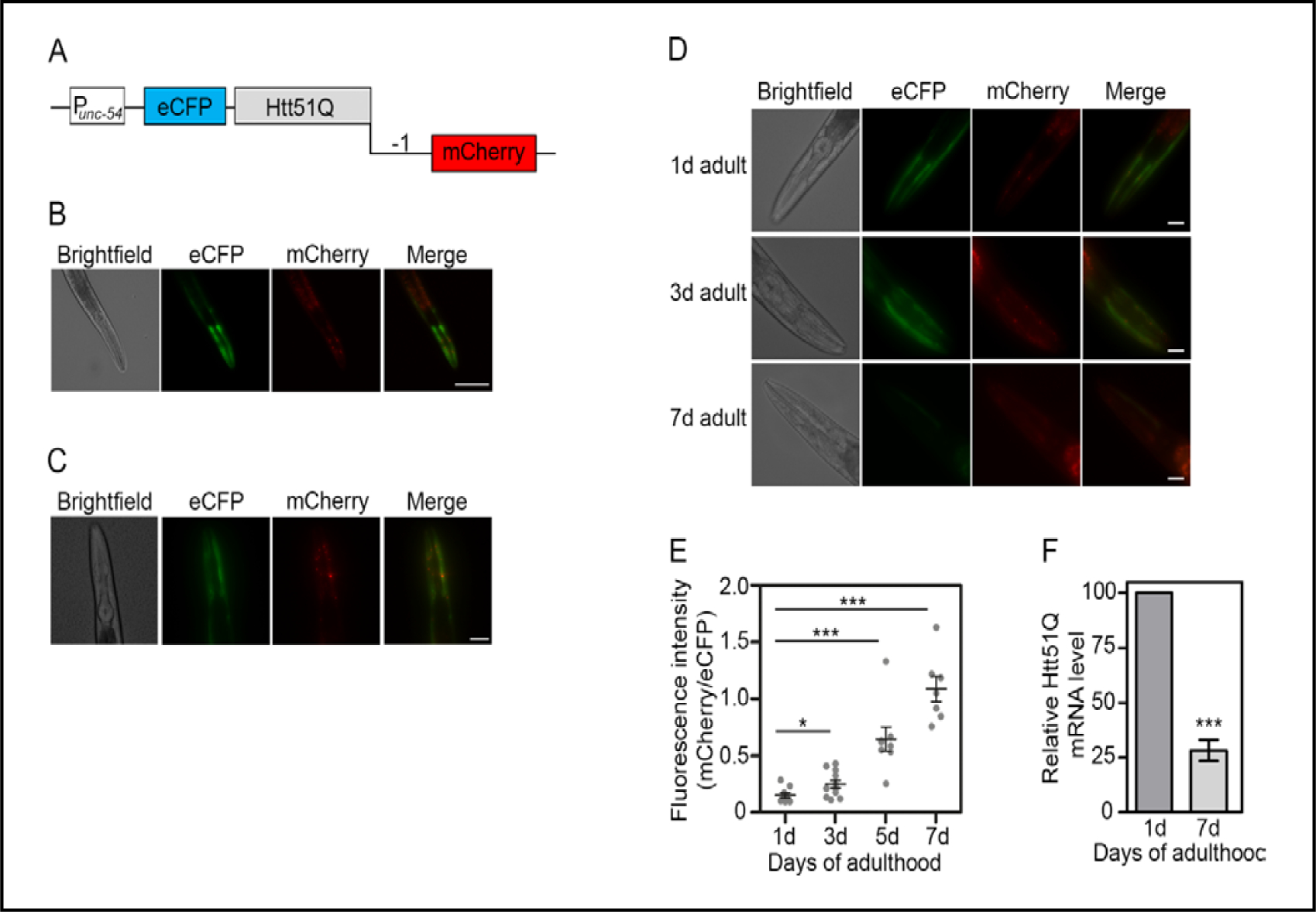Fig. 1.

The frequency of −1 frameshifting with age. (A) Schematic of the frameshift reporter Htt51Q(−1) for expression in body wall muscle cells under control of unc-54 promoter. N-terminal eCFP is expressed in zero frame and mCherry reports on −1 frame. (B) Representative fluorescence images of one day-old nematodes with genome-integrated expression of Htt51Q(−1) in the body wall muscle cells. For better visualization, eCFP fluorescence is depicted in green. Scale bar, 25 μm. (C) Representative fluorescence images of synchronized nematodes at larval stage L4. Scale bar, 25 μm. (D) Representative fluorescence images of synchronized nematodes imaged at different ages. Starting at day 5, autofluorescence in the intestine becomes visible. Scale bar, 25 μm. (E) Quantification of the ratio between mCherry and CFP fluorescence of the animals expressing Htt51Q(−1) at different age (n = 7–11 animals). Fluorescence was integrated over the head area since the expression was more prominent in the head and only this region was considered in the quantifications. Note that the mCherry channel was disproportionally enhanced in panels B-D compared to the blue CFP channel for better visualization. The quantification, however, was performed with non-enhanced images. *, p<0.05; ***, p<0.001, Student’s t-test. See also Table S1. (F) qPCR analysis of adult nematodes with genome-integrated Htt51Q(−1) expression. Htt51Q(−1) mRNA was normalized to act-2. Expression in day 1 adults was set to 100%. Data are means ± SEM (n = 3). ***, p<0.001, Student’s t-test.
